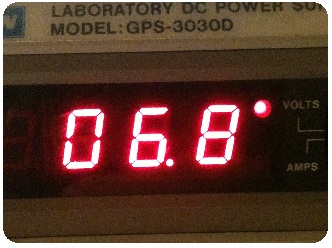| HOME |
| CUSTOM DESIGN |
| PRODUCTS |
| CONTACT |
| CIRCUITS |
| FAQs |
| RESOURCES |
| LINKS |
| ABOUT
|
For other 7400 series TTL IC
datasheets, CLICK HERE
|
| 7448 DATASHEET |
This package accepts a 1-2-4-8
positive-logic Binary Coded Decimal (BCD) input and converts it to the
proper pattern necessary to illuminate a 7 segment display. A high
output is intended to light the segment. (Common cathode), meaning the
negative connection of all of the LEDs is tied together. The outputs are open-collector but have internal 2K ohm pull-up resistors and have a maximum low-level output sink current of 6 milliamperes (6mA). For normal operation the Lamp Test pin and BI/RBO (OUT) must be pulled high (connected to the positive supply). All segments are extinguished when a low (logical zero) signal is applied to pin 4 (OUT). A PWM (pulse-width modulated) signal can be applied to this pin to provided varying brightnesses to the LED display being driven, allowing user control of LED dimming for applications such as power saving by decreasing the brightness during times of low ambient light. To build a simple 0-9 digital counter, consider using the 7490 decade counter. It's 4 outputs can be directly interfaced to the 7448 / 7447 and the binary coded decimal will be converted into the appropriate segments for the LED display. Other than a little more conditional logic connections and a few more stages, there's nothing stopping you from building a full digital clock with hours, minutes, and seconds.  Shown above, is an example application of the 74LS48 7-seg decoder circuit. The decimal point indicator on this volt-meter as well as the colons ":" on clocks, are not controllable by the 7-seg decoder. In circuits involving a microcontroller, if I/O pins are available, 7448 / 7447 ICs (and similar) are generally omitted to save money. A microcontroller can be programmed to perform the binary to decimal conversion and then use a look-up chart to perform the segment conversion. However, if pins are limited on the microcontroller, it can be advantageous to use 7448 ICs in a multiplexing fashion to drive the 7-segment displays. In this method, the microcontroller would send BCD (binary coded decimal) on 4 output pins to the 7448 chips. A line selector (an additional output line on the microcontroller) could select which 7448 chip to target and cycle through the set of displays to produce the overall numeric output. |